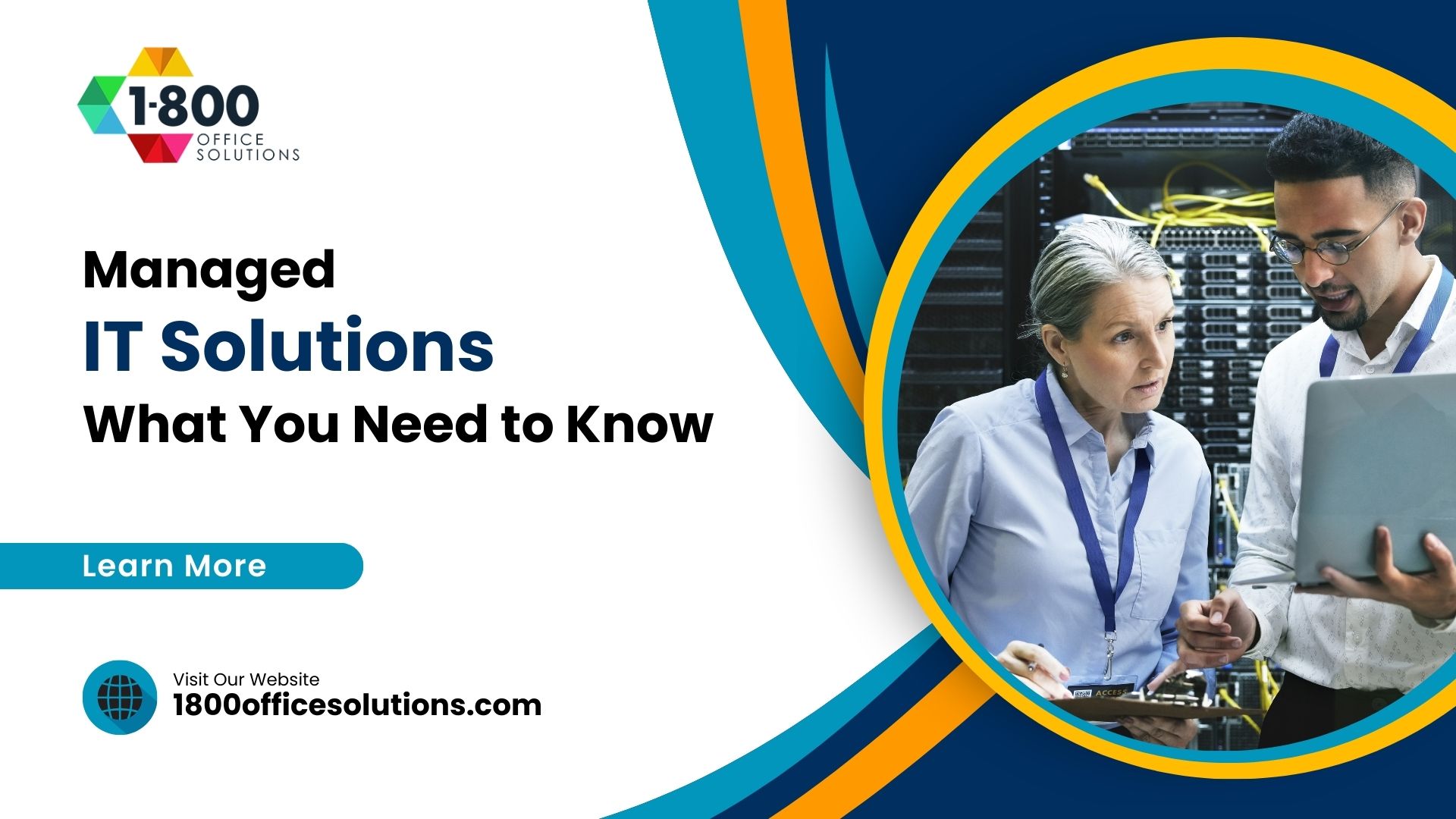Benefits of IT As A Service (ITaaS): Efficiency, Scalability, and Beyond
IT as a Service (ITaaS) stands out as a transformative approach to managing and delivering information technology. Historically, ITaaS has journeyed from a rigid, infrastructure-focused model to a flexible, service-oriented paradigm. This shift underscores its importance in enabling enterprises to pivot quickly in response to changing business needs, leverage technological advancements, and optimize operational efficiencies.
ITaaS is not just a trend; it’s a strategic necessity for businesses aiming to thrive in a digital-first world. Therefore, understanding ITaaS is imperative for organizations looking to modernize their IT framework and drive growth.
Understanding IT as a Service
The Core of ITaaS
At its heart, ITaaS embodies a customer-centric model where service providers deliver IT services on demand, tailored to specific business requirements. This model diverges significantly from traditional IT, where the focus was on acquiring and managing physical IT assets within a data center.
ITaaS, in contrast, emphasizes the delivery of IT as a managed service, aligning more closely with business outcomes and agility. Above all, the essence of ITaaS lies in its ability to provide scalable, flexible, and efficient IT services, transforming the way enterprises consume and manage IT resources.
ITaaS Models Explained
The ITaaS framework encompasses several service models, each designed to cater to different aspects of enterprise IT needs. For instance, Infrastructure as a Service (IaaS) offers virtualized compute, storage, and networking resources over the internet, allowing businesses to avoid the costs and complexity of managing physical servers. Similarly, Platform as a Service (PaaS) provides developers with a cloud-based environment to build, deploy, and manage applications without worrying about the underlying infrastructure.
Software as a Service (SaaS), perhaps the most recognized model, delivers software applications over the internet, on a subscription basis. These models collectively ensure that businesses can access a wide spectrum of IT services, tailored to their specific needs, without the overhead of traditional IT management.
Not Just a Cloud Service
However, ITaaS extends beyond mere cloud-based services. It encapsulates a broader strategy that integrates cloud computing with on-premise solutions, managed services, and bespoke business applications. This holistic approach ensures that ITaaS can meet a wider array of business needs, beyond what cloud-based services alone can offer.
In other words, ITaaS is about delivering the right IT service, at the right time, through the most effective mix of services, whether they are cloud-based, on-premise, or hybrid. It’s about leveraging the best of what information technology has to offer to drive business value.
ITaaS represents a paradigm shift in how IT services are delivered and consumed. By understanding and embracing ITaaS, enterprises can significantly enhance their agility, efficiency, and competitiveness in the digital era.
Advantages of ITaaS
Cost Efficiency and Financial Flexibility
The shift from Capital Expenditure (CapEx) to Operational Expenditure (OpEx) is a key benefit of ITaaS. This means that companies don’t have to spend big on hardware and software upfront. Instead, they pay for IT services as they use them. This model offers financial flexibility, as it’s easier to scale services up or down based on current business needs.
Therefore, organizations can align their IT spending with business performance, leading to more predictable budgeting and improved cash flow management. Above all, this financial agility is crucial in today’s fast-paced business environment.
Scalability and Flexibility
ITaaS stands out for its unparalleled scalability and flexibility. Businesses can quickly adjust their IT resources to meet fluctuating demands without the need for significant investment or long-term commitments. This is particularly beneficial in cloud computing services where you can scale up during peak times and scale down when demand wanes.
Similarly, ITaaS allows for the agile deployment of new services or technologies, giving companies a competitive edge. The flexibility inherent in ITaaS models, such as IaaS and PaaS, ensures that businesses can pivot quickly in response to market changes or opportunities.
For a deeper dive into how cloud services like IaaS and PaaS facilitate business agility, explore insights on cloud-based computing which emphasizes the importance of flexible resources in driving operational efficiency.
Focus on Core Business Functions
One of the many benefits of ITaaS is that it enables businesses to concentrate on their core functions. By outsourcing IT management to a managed service provider, companies can redirect their focus and resources towards strategic initiatives rather than getting bogged down by the complexities of IT operations.
This not only improves efficiency but also enhances the organization’s ability to innovate and grow. Moreover, partnering with an ITaaS provider means accessing specialized expertise and technology services that might not be available in-house, thus driving better service outcomes and operational excellence.
Enhanced Security and Compliance
In today’s digital age, security and compliance are top priorities for businesses. ITaaS providers invest heavily in advanced security measures, including regular updates, threat monitoring, and compliance checks, to protect their clients’ data. This managed IT service approach to cybersecurity means that businesses benefit from high-level protections that would be costly and complex to implement on their own.
Additionally, ITaaS providers are adept at navigating the regulatory landscape, ensuring that their clients’ IT services adhere to the latest compliance standards. This peace of mind allows businesses to focus on growth while trusting their ITaaS partner to manage the complexities of data security and regulatory compliance.
For businesses looking to understand the intricacies of aligning IT services with compliance standards, ITIL frameworks offer valuable guidance on service management best practices. Check out ITIL’s best practices for insights into managing IT services in alignment with business needs and regulatory requirements.
In sum, ITaaS delivers significant advantages in cost efficiency, scalability, focus on core business activities, and enhanced security and compliance. These benefits collectively support businesses in becoming more agile, competitive, and secure in a dynamic market landscape.
Implementing ITaaS in Your Business
Steps for Transition
Transitioning to an ITaaS model involves several key steps to ensure a smooth changeover and that the business reaps the full benefits of ITaaS. First, conduct a thorough assessment of your current IT infrastructure and identify areas that can benefit from an ITaaS approach. This step is crucial for understanding the scope and potential impact of the transition.
After that, develop a strategic plan that outlines the objectives, timeline, and milestones for the transition. This plan should align with your business goals and include input from all stakeholders to ensure that the ITaaS model supports the needs of various departments.
Next, choose which services—such as IaaS, PaaS, or SaaS—will best meet your needs. It might involve moving some resources to the public cloud, while others may remain on-premise or transition to a private cloud setup.
Training your team is also essential. Ensure they understand the new operating model and how to leverage the new technology services effectively. Finally, execute the transition in phases to minimize disruption. Monitor the process closely, adjusting as necessary to address any challenges that arise.
Choosing the Right Provider
Selecting the right ITaaS provider is critical to the success of your transition. Start by evaluating the provider’s experience and expertise in your industry. They should understand your business and have a proven track record of delivering high-quality technology services to similar organizations.
Consider the range of services the provider offers. The best ITaaS provider for your business will offer a comprehensive suite of services that can be tailored to meet your specific needs, including cloud computing services, data storage, software, and support.
Review the provider’s service level agreements (SLAs) to ensure they meet your expectations for availability, performance, and security. These agreements should clearly outline the responsibilities of the provider and the service standards you can expect.
Security is another critical factor. The provider should have robust security measures in place to protect your data and ensure compliance with relevant regulations. Ask about their security protocols, compliance certifications, and how they handle data breaches.
Finally, consider the provider’s customer service and support. You’ll want a provider that offers responsive, 24/7 support to address any issues that arise promptly. Look for providers who are known for their customer service excellence and who view their role as a partner in your success, not just a vendor.
Implementing ITaaS in your business can offer numerous advantages, from cost savings and enhanced flexibility to improved security and compliance. By carefully planning your transition and choosing the right provider, you can ensure a smooth transition to ITaaS and position your business for success in today’s competitive environment.
What People Also Ask
What is IT as a Service (ITaaS)?
ITaaS stands for IT as a Service. It’s a way to deliver technology services over the internet. This means businesses can use IT resources like software and storage without owning them outright. ITaaS makes technology flexible and accessible, fitting various needs.
How does ITaaS differ from traditional IT services?
The main difference lies in the delivery model. Traditional IT often requires businesses to buy and manage their own IT infrastructure. ITaaS, however, lets companies consume and pay for IT services as needed. This approach is more agile and cost-effective, reducing the need for large upfront investments in hardware and software.
What are the main types of ITaaS?
There are three primary types: Infrastructure as a Service (IaaS), Platform as a Service (PaaS), and Software as a Service (SaaS). IaaS offers virtualized computing resources, PaaS provides platforms for software development, and SaaS delivers software applications over the internet. Each serves different technology needs, from storage and networking to developing and running applications.
Can small and medium-sized businesses benefit from ITaaS?
Absolutely. ITaaS levels the playing field, allowing SMBs to access the same powerful IT resources as larger companies. It offers scalability, which is key for growing businesses, and flexibility to adjust IT services according to changing needs. SMBs can also benefit from reduced IT costs and the ability to focus more on core business activities instead of IT management.
Conclusion
The future of ITaaS looks bright. It’s becoming a crucial part of today’s business environment, offering many benefits like cost savings, scalability, and access to the latest technology without heavy investments.
As businesses continue to seek agility and efficiency, the demand for ITaaS is expected to grow, shaping how companies leverage technology to achieve their goals. This model not only supports operational efficiency but also drives innovation, making it a key component in the digital transformation journey of businesses across sizes and industries.













